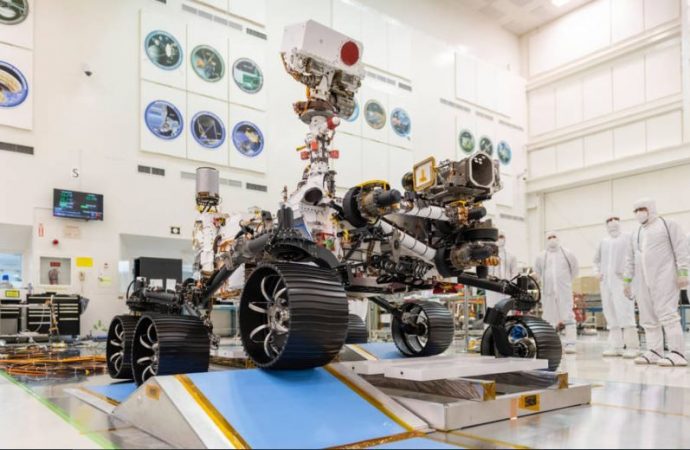The nuclear power generator for NASA’s Perseverance rover has been installed on the spacecraft atop an Atlas 5 rocket at Cape Canaveral, and mission managers gave a green light Wednesday to continue preparations for the rover’s July 30 launch.
Source: Digital Journal
Tory Bruno, head of United Launch Alliance, which is responsible for launching Perseverance on its way next Thursday, July 30, announced on Twitter Wednesday that “The #MarsPerseverance MMRTG is installed and doing well. This Red Planet dune buggy is fueled and ready to go!”
The installation of the power source for the rover is a vital step in the success of the Mars Mission. The power system is called a Multi-Mission Radioisotope Thermoelectric Generator (MMRTG), and will keep the rover’s instruments running and allow it to stay warm during the cold Martian nights and winters.

NASA/RPS
According to Space.com, the MMRTG is designed to power the rover for up to 14 years, far beyond the $2.7 billion spacecraft’s initial mission lifetime of nearly two Earth years, or one Martian year. It is based primarily on the system that powers NASA’s Curiosity rover, which launched in 2011 and has been roving the Red Planet since August 2012.
Technicians installed the 99-pound (45-kilogram) MMRTG by going through the access door on the Atlas 5’s payload shroud on Monday, The power generator was secured on the aft-end of the Perseverance rover through an opening on the spacecraft’s backshell.
“At this point, the spacecraft has been powered on and will remain so around the clock,” said Dave Gruel, manager of Assembly, Test and Launch Operations, or ATLO, for the Mars 2020 mission, reports Space Flight Now. “The launch operations team will continue to monitor the health of the spacecraft to ensure it’s ‘go’ for launch — nothing glamorous, but an important part of the job.”
How the MMRTG works to produce electricity
The MMRTG works by converting heat from the natural decay of radioisotope materials into electricity. The MMRTG consists of two major elements: a heat source that contains the radioisotope fuel (mostly plutonium-238), and solid-state thermocouples that convert the plutonium’s decaying heat energy to electricity.
Not to worry, though. The plutonium-238 is a special non-weapons grade isotope of plutonium and according to NASA and the DOE, cannot explode. The generator actually has about 10.6 pounds (4.8 kilograms) of plutonium dioxide fuel.
So how much electricity will the MMRTG produce, and for how long? The device will produce about 110 watts of power at the start of Perseverance’s mission. And because the plutonium-238 decays slowly, based on its end-life of about 17 years, it will still be producing close to 72 watts of power – long past the life of Perseverance.
While Perseverance is almost a clone of NASA’s Curiosity rover, it carries an upgraded suite of scientific instruments, including improved cameras and a payload to demonstrate producing oxygen from carbon dioxide in Martian atmosphere, a key capability for future human expeditions.
Source: Digital Journal

































Leave a Comment
You must be logged in to post a comment.